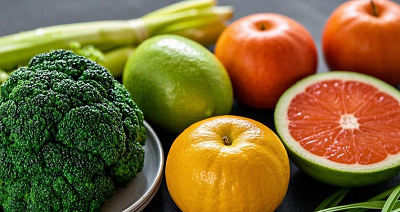How to Self-Treat Epididymitis?
Epididymitis is a common condition among young and middle-aged men, characterized by symptoms such as scrotal pain, heaviness, and urinary issues like frequent urination, urgency, and pain during urination. Although medical treatment is essential, certain daily self-care practices can help alleviate symptoms.

Dietary Adjustments for Epididymitis
Diet plays a crucial role in self-treating epididymitis. Proper nutrition can support the body’s healing process and ease discomfort.
Green Bean and Kelp Rice Porridge
Start by preparing an appropriate amount of kelp, green beans, and rice. Wash the kelp thoroughly to remove impurities and excess salt, then cut it into small pieces. Soak the green beans for a few hours to allow them to absorb water, which makes them easier to cook. Wash the rice as well. Put all ingredients into a pot, add an ample amount of water, and bring it to a boil over high heat. Then, lower the heat and let it simmer until the porridge thickens and becomes soft. Add sugar to taste.
This porridge has excellent diuretic and anti-swelling effects, making it particularly beneficial for epididymitis caused by dampness and phlegm accumulation. Patients with this condition often experience significant scrotal heaviness, and consuming this porridge can help the body expel excess moisture, reducing swelling and discomfort.
Pig Trotter and Green Bean Soup
This soup requires a bit more effort to prepare. First, clean the pig trotter and blanch it in boiling water to remove blood and impurities. Remove it and set it aside. Soak the green beans in water beforehand. Then, place the pig trotter, green beans, and dried tangerine peel in a pot with a generous amount of water. Since the cooking process takes about four hours, ensure there’s enough water. Simmer over low heat, allowing the nutrients to infuse into the soup. Once done, add salt to taste and serve.
This soup is effective in clearing heat and detoxifying the body, making it particularly suitable for epididymitis caused by excessive heat and dampness. When internal damp-heat accumulates, symptoms such as scrotal pain and heaviness worsen. This soup helps expel excess heat and moisture, alleviating discomfort.
Tomato and Red Bean Soup
To prepare this dish, soak red beans in advance until they become plump. Wash and soak black fungus, then tear it into small pieces. Dice fresh tomatoes into small chunks. Place all ingredients into a pot, add water, bring to a boil over high heat, then simmer until a soup forms.
This soup is excellent for promoting blood circulation and reducing swelling, making it ideal for epididymitis caused by blood stasis. When epididymitis is in this stage, the scrotum often feels painful, with noticeable lumps. Consuming this soup can improve blood circulation, help dissolve clots, and relieve scrotal pain and swelling.
Self-Treatment with External Applications
Pepper and Flour Paste
Grind black pepper into a fine powder and mix it with white flour in a certain ratio. Add an appropriate amount of water to make a paste, then apply it carefully to the perineum. This method helps relieve discomfort caused by epididymitis, as the warming nature of pepper promotes local blood circulation, thereby reducing pain and swelling.
Sword Bean and Vinegar Application
Crush sword beans into a fine paste and mix them with vinegar. Apply the mixture to the affected area (scrotum). Sword beans have medicinal properties, and when combined with vinegar, they can effectively ease epididymitis symptoms, helping to reduce pain and swelling.
Fresh Verbena Poultice
Collect fresh verbena, wash it thoroughly, and crush it into a paste. Apply it directly to the affected area. Verbena has cooling and detoxifying properties and can help reduce inflammation, pain, and swelling when applied externally.
Ginger Slice Application
Cut fresh ginger into thin slices and place them on the epididymis. Use gauze to secure the slices and prevent them from falling off. Ginger has warming properties that help improve local blood circulation, providing relief from epididymitis symptoms.
Conventional Treatment for Epididymitis
For treating epididymitis, Diuretic and Anti-inflammatory Pill is an effective herbal medicine option. It has properties that clear heat and toxins, promote blood circulation, relieve pain, and support urinary function. This herbal remedy effectively reduces inflammation, swelling, and pain, while also improving abnormal urination. It has no significant side effects or drug resistance. However, patients should take it consistently under a doctor’s guidance.
Lifestyle Adjustments
Maintain Personal Hygiene
Proper hygiene is crucial for preventing and treating epididymitis. The genital area should be cleaned daily with mild, warm water, avoiding harsh soaps that may cause irritation. Keeping the genital area clean and dry helps prevent bacterial growth, reducing the risk of worsening or recurring epididymitis.
Wear Appropriate Underwear
Choosing the right underwear is vital. Tight underwear exerts excessive pressure on the scrotum, affecting blood circulation and hindering recovery. Loose, breathable cotton underwear is recommended to create a comfortable environment, promoting better blood flow and aiding healing.
Avoid Prolonged Standing or Sitting
Long periods of standing or sitting can negatively impact scrotal health. Standing for too long increases gravitational pressure on the scrotum, leading to poor blood circulation and increased discomfort. Similarly, prolonged sitting restricts blood flow in the perineal region, worsening symptoms. Patients should take breaks, move around, and engage in light physical activities such as walking to enhance circulation and relieve pressure.
Maintain a Balanced Diet
In addition to the dietary remedies mentioned earlier, maintaining overall dietary balance is crucial. Spicy and irritant foods like chili and pepper should be avoided, as they can exacerbate inflammation and worsen symptoms. Instead, a diet rich in vitamins and proteins, such as fresh fruits, vegetables, lean meat, and fish should be emphasized. These foods provide essential nutrients, boost immunity, and support epididymitis recovery.
Conclusion
While dietary and external applications can serve as supportive measures for managing epididymitis, they cannot replace professional medical treatment. Seeking guidance from a healthcare professional is essential. Combining proper medication, lifestyle modifications, and self-care strategies ensures the best treatment outcomes. By adopting these comprehensive measures, patients can effectively control symptoms, reduce discomfort, prevent recurrence, and maintain good reproductive health.
You may also be interested in:
Managing Prostatitis and Epididymitis Together: What Patients Need to Know
Does Congestive Epididymitis Go Away on Its Own?
Effective Moxibustion Treatments for Chronic Epididymitis: Relieve Pain and Boost Recovery



